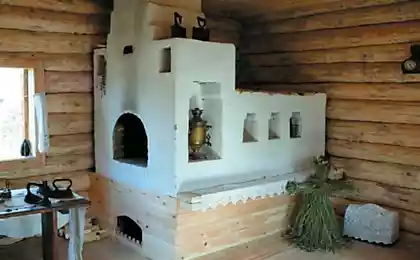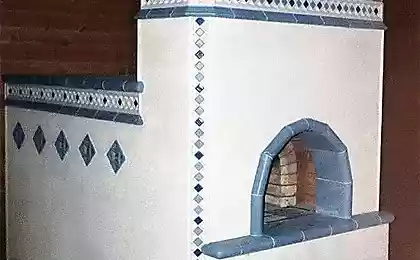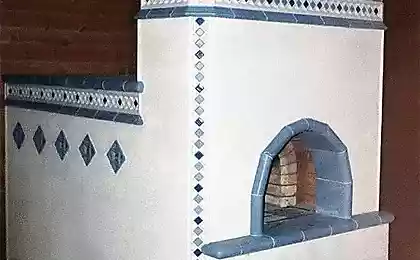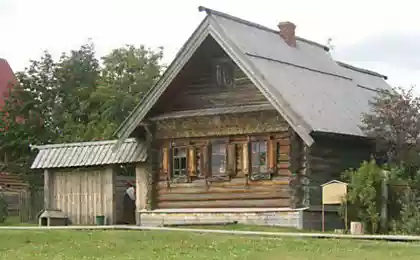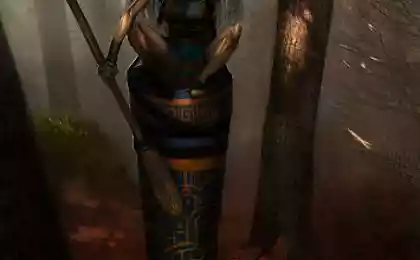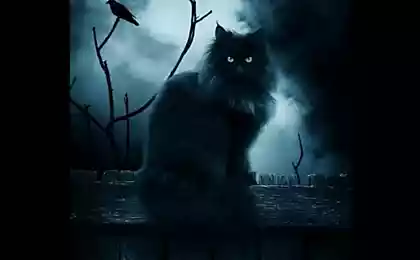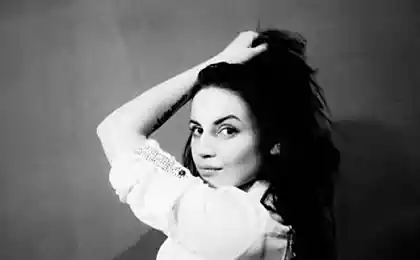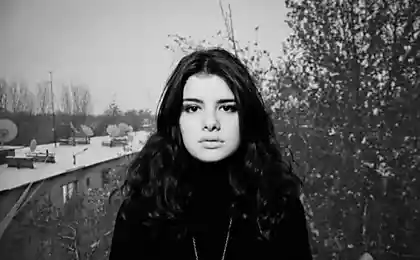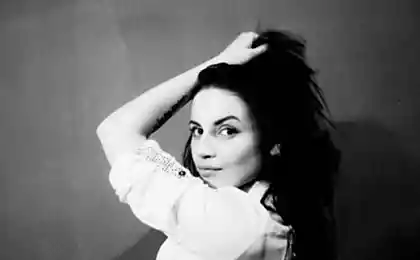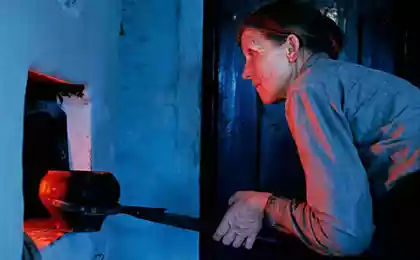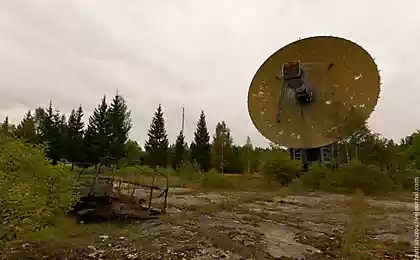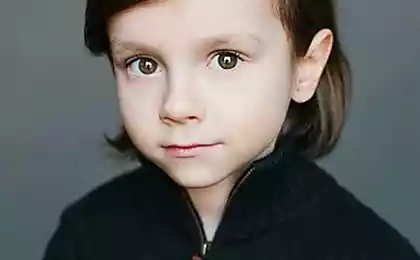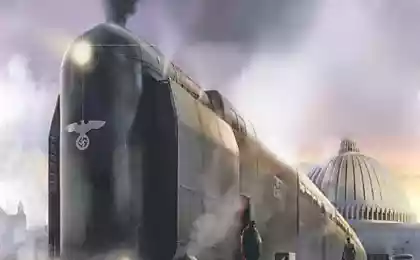429
Russkaya izba and 7 of the special places in it
Eighty four million four hundred twenty three thousand four hundred twenty five
On the porch of the hut. Rostislav Ivanovich Felicin. 1855
Through the door hands do not serve the Windows at night to close, not to Bang on the table – "the table of God's hand" in the fire (furnace) care – these and many other rules specify the behavior in the house. The house is the microcosm in the macrocosm, his, opposed to a stranger.
People setting up home, likening it to the world, so every corner, every detail is filled with meaning, demonstrate the relationship between man and the world around him.
1.Derivat we entered into a Russian hut, crossed the threshold, what could be easier!
But for the peasant the door – not just entry and exit from the house, it is a way of overcoming the boundaries between internal and external worlds. Here lies a threat, a danger, because it is through the door can enter the house and the evil man, and evil. "Small, puzatenky, the whole house saves" – the castle had to protect from detractors. However, in addition to gates, deadbolt locks developed a system of symbolic ways that protect the home from the "evil forces": the crosses, nettle, fragments of spit, knife or Thursday candle stuck in the crevices of the sill or jamb. In the house just don't go in and it turns out differently: the approach to the door was accompanied with a short prayer ("Without God – or before threshold"), before a long journey it was the custom of sitting down, the traveler was forbidden to talk to one another across the threshold and look at the corners, and the guest had to meet the threshold and to put themselves forward.
2. Печь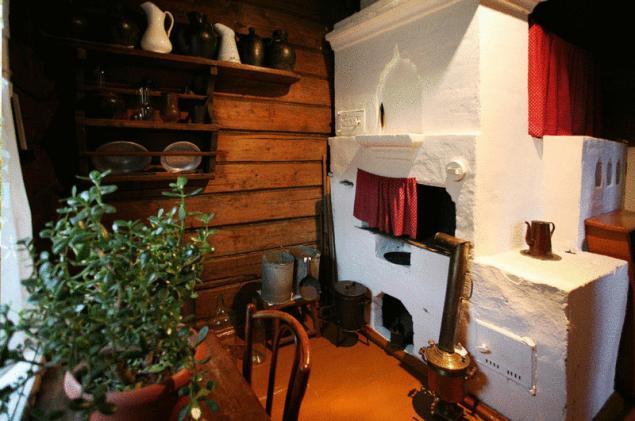
What we see before us at the entrance to the house? The furnace, which served as both a source of heat and cooking space, and a place to sleep, were used in the treatment of various diseases. In some areas in the kiln washed and steamed. Oven sometimes personified in all the house, its presence or absence determines the nature of the buildings (a house without a furnace – non-residential). Revealing a folk etymology of the word "hut" from "vytopna" from "to drown, to heat up". The main function of the stove – cooking – comprehended not only as economic but also as sacred: raw, undeveloped, impure has become boiled, mastered, clean.
3. Red ugolf Russian house always diagonally from the furnace was located in the red corner is a sacred place in the house, emphasized by its name: red – a beautiful, solemn and festive. Whole life was focused on the red (senior, honorary, God's) angle. Here ate, prayed and blessed it to the red corner facing the headboard of the bed. It was a place most rituals related to birth, wedding, funeral.
4. Stonetherapy part of the red corner – table. Laden with the dainties of the table – a symbol of abundance, prosperity, completeness, sustainability. Concentrated here everyday and festive life of the person, here the guest, put the bread and Holy water. The table is likened to the Holy place, the altar that affects the behavior of the person at the Desk and in the red corner ("Bread on the table, so the table to the throne, and no bread piece and the table Board"). In various ceremonies, special importance was attached to the movements of the table during a difficult delivery table forward into the middle of the hut, in case of fire from neighboring houses endured a table covered with a cloth, and walked with him around the lit-up buildings.
5. Lawcivil table, along the wall – please note! shop. For men long male shop for women and children to the front one located under the window. Shops connected "hubs" (kiln corner, red corner) and the "periphery" of the house. In a particular ritual they represented the path, the road. When the girl, previously considered a child and wore one undershirt was 12 years old, her parents had made her walk the bench back and forth, and then, crossing, she had to jump from the bench in a new dress, sewn especially for this occasion. From that moment began a youthful age, and the girl was allowed to go to dances and be considered a bride. But the so-called "poor" shop, located at the door. Got its name because it could go poor and anyone else who came into the house without the permission of the owners.
6. Matically stand on the middle of the hut and look up, see the beams, giving rise to the ceiling, a joist. It was believed that the uterus is the backbone of the top of the home, therefore the process of laying Matica is one of the key moments of the construction of the house, accompanied by the shattering cereal grains and hops, prayer, refreshments carpenters. Matica was attributed to the role of the symbolic border between the inner part of the house, and external related to the input and output. The visitor, entering the house, sat down on the bench and could not go over the matrix without the invitation of the owners, going on a journey, it was necessary to hold the joist to the road were happy, and in order to protect the house from bugs, cockroaches and fleas, the matrix was found tucked from harrow tooth.
7. Will annawilliam the window and see what's happening outside the house. However, the Windows as eyes of the house (window – eye) allow to observe not only the one who is inside the house, but whoever is outside, hence the threat of permeability. The use of Windows as an ad-hoc input and output was undesirable: if you fly into the window the bird to be trouble. Through the window carried the dead unbaptized children, adults, dead, sick with fever. Only the penetration of sunlight into the window it was desirable and were made in various Proverbs and riddles ("the Red girl in the window looking", "Lady in the yard, and the sleeves in the house"). Hence the solar symbolism that we see in the ornaments of the frames that adorn the Windows and at the same time, keep from bad, unclean.
Source: rodovid.me
On the porch of the hut. Rostislav Ivanovich Felicin. 1855
Through the door hands do not serve the Windows at night to close, not to Bang on the table – "the table of God's hand" in the fire (furnace) care – these and many other rules specify the behavior in the house. The house is the microcosm in the macrocosm, his, opposed to a stranger.
People setting up home, likening it to the world, so every corner, every detail is filled with meaning, demonstrate the relationship between man and the world around him.
1.Derivat we entered into a Russian hut, crossed the threshold, what could be easier!
But for the peasant the door – not just entry and exit from the house, it is a way of overcoming the boundaries between internal and external worlds. Here lies a threat, a danger, because it is through the door can enter the house and the evil man, and evil. "Small, puzatenky, the whole house saves" – the castle had to protect from detractors. However, in addition to gates, deadbolt locks developed a system of symbolic ways that protect the home from the "evil forces": the crosses, nettle, fragments of spit, knife or Thursday candle stuck in the crevices of the sill or jamb. In the house just don't go in and it turns out differently: the approach to the door was accompanied with a short prayer ("Without God – or before threshold"), before a long journey it was the custom of sitting down, the traveler was forbidden to talk to one another across the threshold and look at the corners, and the guest had to meet the threshold and to put themselves forward.
2. Печь

What we see before us at the entrance to the house? The furnace, which served as both a source of heat and cooking space, and a place to sleep, were used in the treatment of various diseases. In some areas in the kiln washed and steamed. Oven sometimes personified in all the house, its presence or absence determines the nature of the buildings (a house without a furnace – non-residential). Revealing a folk etymology of the word "hut" from "vytopna" from "to drown, to heat up". The main function of the stove – cooking – comprehended not only as economic but also as sacred: raw, undeveloped, impure has become boiled, mastered, clean.
3. Red ugolf Russian house always diagonally from the furnace was located in the red corner is a sacred place in the house, emphasized by its name: red – a beautiful, solemn and festive. Whole life was focused on the red (senior, honorary, God's) angle. Here ate, prayed and blessed it to the red corner facing the headboard of the bed. It was a place most rituals related to birth, wedding, funeral.
4. Stonetherapy part of the red corner – table. Laden with the dainties of the table – a symbol of abundance, prosperity, completeness, sustainability. Concentrated here everyday and festive life of the person, here the guest, put the bread and Holy water. The table is likened to the Holy place, the altar that affects the behavior of the person at the Desk and in the red corner ("Bread on the table, so the table to the throne, and no bread piece and the table Board"). In various ceremonies, special importance was attached to the movements of the table during a difficult delivery table forward into the middle of the hut, in case of fire from neighboring houses endured a table covered with a cloth, and walked with him around the lit-up buildings.
5. Lawcivil table, along the wall – please note! shop. For men long male shop for women and children to the front one located under the window. Shops connected "hubs" (kiln corner, red corner) and the "periphery" of the house. In a particular ritual they represented the path, the road. When the girl, previously considered a child and wore one undershirt was 12 years old, her parents had made her walk the bench back and forth, and then, crossing, she had to jump from the bench in a new dress, sewn especially for this occasion. From that moment began a youthful age, and the girl was allowed to go to dances and be considered a bride. But the so-called "poor" shop, located at the door. Got its name because it could go poor and anyone else who came into the house without the permission of the owners.
6. Matically stand on the middle of the hut and look up, see the beams, giving rise to the ceiling, a joist. It was believed that the uterus is the backbone of the top of the home, therefore the process of laying Matica is one of the key moments of the construction of the house, accompanied by the shattering cereal grains and hops, prayer, refreshments carpenters. Matica was attributed to the role of the symbolic border between the inner part of the house, and external related to the input and output. The visitor, entering the house, sat down on the bench and could not go over the matrix without the invitation of the owners, going on a journey, it was necessary to hold the joist to the road were happy, and in order to protect the house from bugs, cockroaches and fleas, the matrix was found tucked from harrow tooth.
7. Will annawilliam the window and see what's happening outside the house. However, the Windows as eyes of the house (window – eye) allow to observe not only the one who is inside the house, but whoever is outside, hence the threat of permeability. The use of Windows as an ad-hoc input and output was undesirable: if you fly into the window the bird to be trouble. Through the window carried the dead unbaptized children, adults, dead, sick with fever. Only the penetration of sunlight into the window it was desirable and were made in various Proverbs and riddles ("the Red girl in the window looking", "Lady in the yard, and the sleeves in the house"). Hence the solar symbolism that we see in the ornaments of the frames that adorn the Windows and at the same time, keep from bad, unclean.
Source: rodovid.me
The puppy French bulldog learns to jump ( video )
8 foods high in magnesium content,useful for insomnia and the treatment of other diseases


